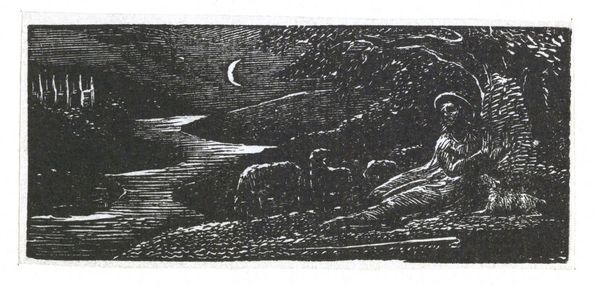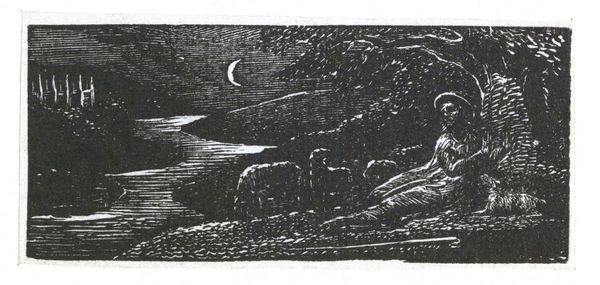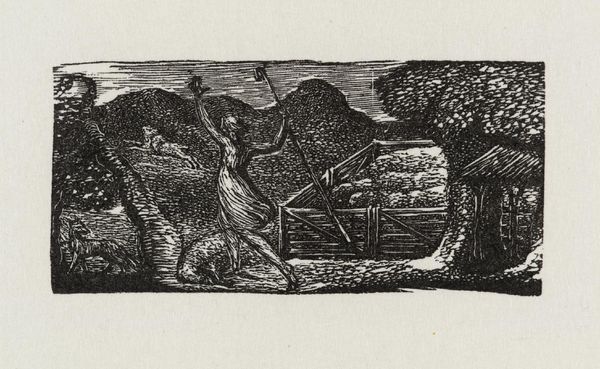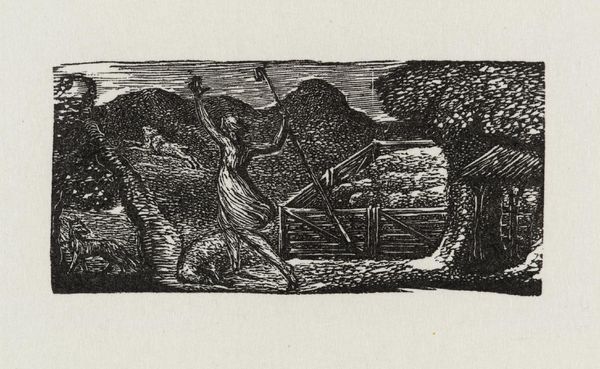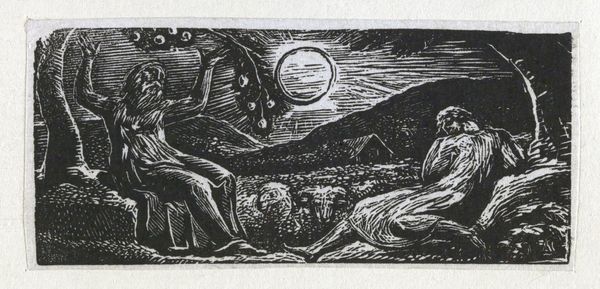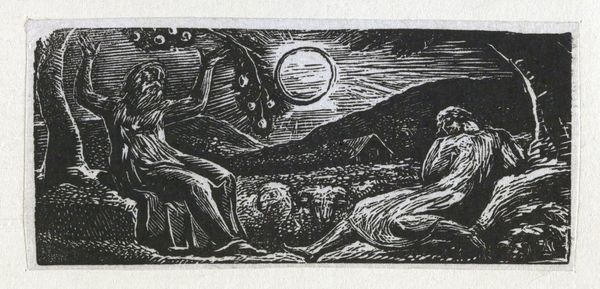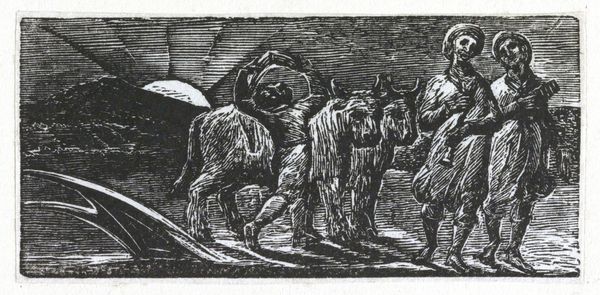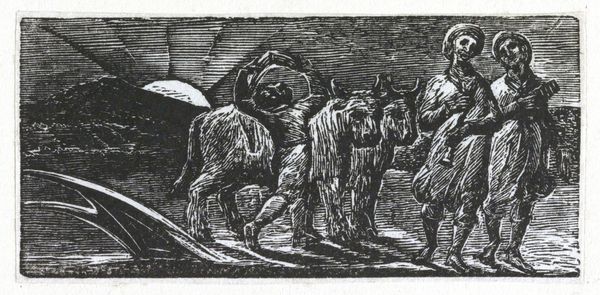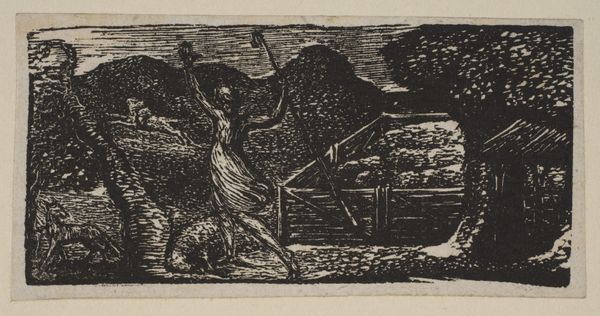
Dimensions: image: 35 x 73 mm
Copyright: NaN
Editor: This wood engraving is by William Blake, titled ‘Nor Fox, nor Wolf, nor Rat among our Sheep.’ It's quite small, only 35 by 73 mm. The stark contrast creates a dramatic mood. What do you see in this piece? Curator: The interplay of light and shadow is indeed striking. Note how Blake uses dense, almost chaotic, lines to define form, particularly in the landscape. This contrasts sharply with the relatively smoother rendering of the figure, drawing our eye to its central placement. Editor: The figure's pose seems almost frantic. Is that deliberate? Curator: Precisely. Consider how the upward thrust of the figure's arms and the diagonal of the staff create a dynamic tension within the compact space. This tension, visualized through form, might be the essence of the work's meaning. Editor: So, the composition itself conveys the emotional content? Curator: Indeed. Blake masterfully manipulates the visual elements to communicate a sense of urgency and perhaps, a call for vigilance. Editor: That’s a different way to look at it; analyzing the structure helps to unlock the meaning. Curator: It allows the artwork to speak for itself, wouldn't you agree?
Comments
tate 8 months ago
⋮
http://www.tate.org.uk/art/artworks/blake-nor-fox-nor-wolf-nor-rat-among-our-sheep-a00117
Join the conversation
Join millions of artists and users on Artera today and experience the ultimate creative platform.
tate 8 months ago
⋮
Samuel Palmer was the most important of Blake’s followers, known as the Ancients. Palmer first met Blake in 1824. He described these illustrations to an imitation of the First Eclogue by the Roman poet Virgil as ‘visions of little dells, and nooks, and corners of Paradise’. Palmer’s art was particularly influenced by them. These prints appealed to the Ancients because they were the result of Blake’s experiments with a new medium; he had never engraved on wood before. Even at the age of sixty-four he wanted to make further explorations in his art. Gallery label, August 2004
